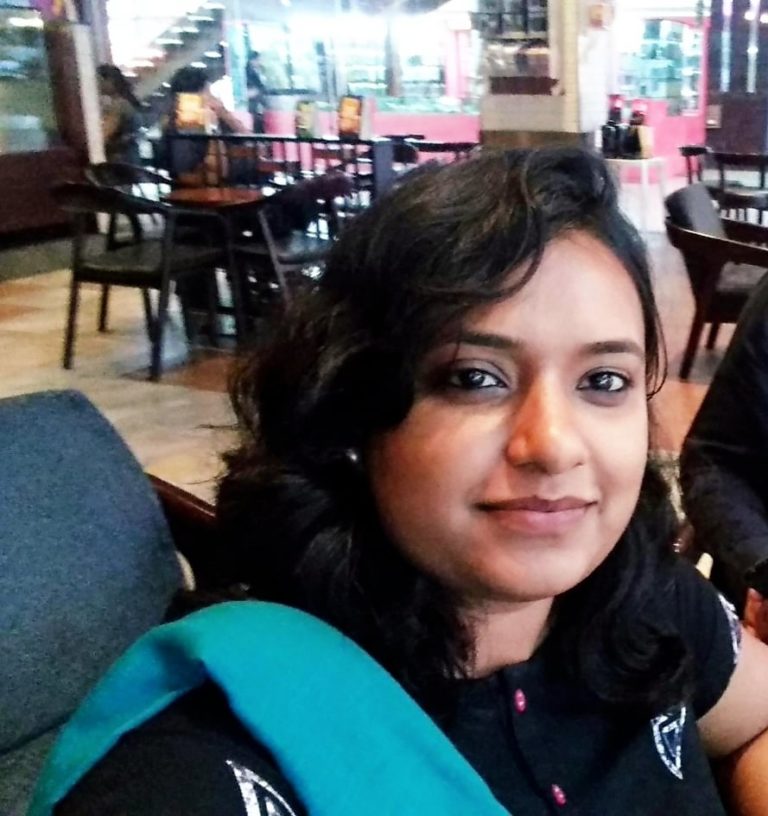Vanshree Vankar
 In India, the historical context of oppression through occupation has given birth to social stratification via caste culture which includes notions of purity and impurity. This brutal history of thousands of years of discrimination restricts the utility of public space in ways both physical and psychological. In turn, these constraints on the utility of public space for the marginalised had led them to re-construct a counter society which rejects the culture of caste, while adopting the path of Buddhism introduced by Dr. Ambedkar in 1956. This paper will attempt to a) derive the cosmology of converted Buddhist societies of Mumbai, through the ontological inquiry and autoethnographic study of a vihara located in the Mankhurd area of suburban Mumbai, (b) reconstruct the social transformation of marginalized groups in the caste culture through visible and invisible symbols of assertion as well as their redefined identities, and (c) trace the transformation of socially disadvantaged groups, interpreting assertion through symbolic interaction and subjective experiences towards claiming the space.
In India, the historical context of oppression through occupation has given birth to social stratification via caste culture which includes notions of purity and impurity. This brutal history of thousands of years of discrimination restricts the utility of public space in ways both physical and psychological. In turn, these constraints on the utility of public space for the marginalised had led them to re-construct a counter society which rejects the culture of caste, while adopting the path of Buddhism introduced by Dr. Ambedkar in 1956. This paper will attempt to a) derive the cosmology of converted Buddhist societies of Mumbai, through the ontological inquiry and autoethnographic study of a vihara located in the Mankhurd area of suburban Mumbai, (b) reconstruct the social transformation of marginalized groups in the caste culture through visible and invisible symbols of assertion as well as their redefined identities, and (c) trace the transformation of socially disadvantaged groups, interpreting assertion through symbolic interaction and subjective experiences towards claiming the space.
“What is a village but a sink of localism, a den of ignorance, narrow-mindedness and communalism?” asked Dr. Babasaheb Ambedkar. He, therefore, encouraged people to move to cities. Eventually, with industrialization, the demand for workers and labourers increased tremendously in India and organically a large chunk of the lower caste population started moving towards cities. Another reason behind migration of marginalized communities was unequal distribution of land resources. Caste based discrimination, exploitation and untouchability is still being practiced in the villages openly, and in such a situation, Babasaheb’s call for moving to the city gave new hope to Dalits for better options in employment, independence and self-respect.
Though there are several cities to which large populations migrated, Mumbai in particular has played an important role for Dalits in terms of social, political and economic mobility. In this journey, the incident of conversion by Babasaheb in 1956 is installed as a milestone in the minds of the oppressed community. The people, who were battling from thousands of years, rejected Hinduism and following Babasaheb in conversion to Buddhism, found a new path to counter the culture of inequality and exploitation and lead their life with dignity. Mumbai, as a megacity and economic capital, has provided employment to a large mass of dalit and other marginalized sections from different states of India. This migrant population settled down in different areas of Mumbai, majorly residing in the slums.
This study is based on an engaged participation of the researcher in the field with day-to-day qualitative observations in an area that has evolved a counterculture to the caste society, namely the Amrapali Buddha Vihar in Janata Nagar, Mankhurd, Mumbai. The researcher used the auto-ethnography approach to interpret the dynamics of caste and gender in the public space and constraints in accessibility. This is an attempt to trace caste and culture interconnections and their accessibility to the public space. Though the impact of patriarchy is more visible in the context of gender, the impact of caste is seemingly invisible. The researcher tried to collect the evidence on caste through the lens of symbols, occupations and standard of living.
The Space: Amrapali Buddha Vihar, Mankhurd
Amrapali Buddha Vihar is located in the slums of Mankhurd, which is named as Janata Nagar, Mandala, Mankhurd. People from Uttar Pradesh and Bihar have migrated in search of wages and set up shelter in this area. At present Janata Nagar has a population of over 5000 as per the documents of the Municipal Corporation of Greater Mumbai. Also, this place is reserved for parking of medium and heavy transportation. After 2006, the population of this slum has increased substantially. The area is crowded with six pockets, and there are two dominant areas which are divided by people of two distinct religions, Hanuman Mandir and Masjid areas. Other occupants in the colony include general stores, private pharmacies, roadside stalls, small shops, and some passing vendors with daily trade calls. The residential buildings are dilapidated with bare walls and broken brick work, where rainwater is leaking from the rooftops and swamping the narrow corridors. Public toilets in the colony are stinky and a few are dysfunctional.
The pocket of Amrapali Buddha Vihar, however, has created a difference among the residents through a cultural, political and social transformation that comes after rejecting the caste society. This small, one room Buddha Vihar was established in 2007 and has its own committee of men and women to take care of its management. Most of the male dwellers from Amrapali Buddha Vihar pocket are auto-rickshaw drivers, daily wage labourers and shopkeepers. The caste professions have been denounced by these people after they embraced the teachings of Dr. Ambedkar.
Observations
The researcher visited two places, four times on an average, and conducted a self-ethnographic study. Different corners, streets and colonies were observed during the visit. To obtain the daily routine activities at various times, the researcher also visited the areas during public gatherings, festivals and socially important days to understand the physical and psychological dynamics of caste, gender and society.
The public places in the colony are premises of interconnection and power dynamics. Shops, streets and viharas were considered as fields to observe these aspects. It was noticed that the small shops around this area have names such as Samyak daily needs, Tathagat stationary, Sujata beauty parlor, Dhamma electrics, Sanghapal general stores, etc. These names are of buddhist culture and narratives, and none of the shops have an idol or photos of any hindu god or goddess. Most of them have pictures of Dr. Ambedkar and Buddha. Some of the shops have the photo frames of 22 vows of Buddhism. Though some exceptions were also there, we can call them an imitation of hindu scriptures.
The way of celebration of different social events by the community varies from the other communities. The time period when the researcher chose to visit the community covered and witnessed the social event of Mahaparinirvan din i.e. death anniversary of Dr. B. R. Ambedkar. The context behind conducting worship in this event is different from others, and it involves five leaves of a peepal tree which has importance in Buddhism. Peepal tree is known as bodhi vruksha, and it relates to the context where Tathagata Buddha got Nirvana. Meena didi, who takes care of the vihara in Janata Nagar, said, while denying the existence of god or any supernatural energy, that the Vandana they offer in the viharas is not something which is connected to the God or to please God, but it is something they do for healing from their failures, grief and sorrow.
The researcher attended a small birthday party event in the community and interacted with the children, asking them if they faced any problems in going to school or interacting with other students. The children expressed that they were being called Harijan and they used to feel inferiority complex due to their social background. They also traced that the behavior of teachers and school authorities is rude towards them, and indirectly, the other students of the class also treat them as the adults do. These children are scared of sitting on the first bench of the class, though they haven’t been scolded by anybody for it yet. When further asked about how they dealt with this issue, the children replied that they took these issues to their community meetings held in viharas. They went to their parents and other elder community members and took them to school in the group. As an outcome of this pressure, the teachers have stopped calling them Harijans. But this didn’t change the behaviour of the teachers towards these students. The children still feel excluded and are not able to fully utilise the infrastructure of the school.
As regards public utilities, the pocket has managed to get water supply, which is provided for 3 hours in the morning, daily. But it is observed that the water pipeline in this pocket is quite new compared to the other pockets of the slum. While interacting with an old lady of the community, she claimed that there used to be a single common water supply for Amrapali Buddha Vihar and Hanuman Mandir, but there were daily conflicts for the water that ended in caste abuses, labeling them as impure and polluting the water. For this reason, the people of Amrapali Buddha Vihar pocket themselves stopped going to Hanuman mandir pocket for water. Initially they managed with water tankers, and later they asked the municipal corporation for a separate water supply connection.
The school dropout ratio of girls here is less than in other pockets. Through interactions with the youth of the community, especially the girls, it was found that the three highest qualified girls among them were pursuing their post graduation. When asked about their problems, they stated that while going to and coming back from college they have to pass through other pockets, and face verbal and sexual abuse several times. Some boys from other communities have also abused them by caste. This has been worrying the parents of these girls, but didn’t make them decide to stop their education.
The virtual boundaries of the regions also can be discerned by the boards and banners within the colony. Hanuman mandir pocket, which is an immediate neighbouring pocket to the Amrapali Buddha Vihar, fences their boundary with a huge saffron flag on the first house of the territory. A huge board saying Jai Shree Ram is placed on the other side. Indirectly, these symbols are set there to clearly define the boundaries.
Conclusion
This autoethnography based on the viharas recorded the power dynamics of caste, its access and usage, as observed. The question ‘what is the role of spaces in the caste domain?’ reveals the subordinate role played by the counterculture to Hinduism, that is Buddhism, to reclaim the space.
According to Kant’s opinion, space is merely a form of institutions, that it is just a structure of our own minds imposed on our representations. And space is not a property of the thing that exists independently of our minds and of our knowledge of them. This view of Kant is relevant in some contexts that the restrictions on space and utility are constructs of the mind that have background of history and knowledge But in the context of India where basic human rights are rejected by the complex social stratification like caste, they are not only mind constructed spaces but also embed physical involvement of power and accessibility.
Dr. Babasaheb Ambedkar’s struggle on March 2, 1930, for Kalaram temple entry in Nashik was more towards having equal rights as the subjects of the region. Before entering the Kalaram temple and after that too, almost every day Dalits were/are stopped from entering the temples, many Dalits are still being boycotted and killed, with extreme hatred, only to uphold the idea of purity by the so-called upper castes. Though Ambedkar and his community had rejected the existence of the Hindu gods and goddesses, this movement led by Ambedkar was for claiming equal rights to these public spaces, and thereby reclaiming human dignity that was severely violated by caste for centuries .
The virtual boundaries of the area with saffron flag and the Jai Shree Ram board makes the people of Amrapali Buddha Vihar uncomfortable. This is because in this country, the color of hindutva, their so called literature, culture, idols of god-goddess and slogans remind them of the amount of violence and injustice they have faced throughout history upto the present. This symbolic is nothing but the symbol of oppression creating restrictions on them.
As the children of Janata Nagar explained, the inaccessibility of first benches in their classroom, and the inferiority complex experienced by them is an invisible form of restriction due to caste in public spaces. This fear of using the first bench they comes from the history of oppression being practiced by the brahmanical social structure.
The new water supply is an example of restriction on physical accessibility of public property. And the advocacy and managing of new and separate water supply from municipalities shows how they are re-building a counter society for themselves with better livelihood.
The harassment faced by the youth, especially the girls, is an indirect restriction on using the virtual space. As freedom and power are driven by education, these girls are moving ahead, countering every such obstacle, and continuing with their education.
‘I measure the success of the community by the degree of success which women have received.’ – Dr. B. R. Ambedkar
This quote of Babasaheb profoundly conveys the idea of the progress of the community and also the power of education.
The names of the shops indicate the process of reclamation of identities. After Dhammadeeksha in 1956, a large chunk of Dalit population from all over India has rejected Hinduism and accepted Buddhism as their means of leading life. The photo frames and slogans in the shops are the symbols of Ambedkarite assertion and rejection of Hindu culture’s brutal history of discrimination and violence.
Dalits as a community have been through the most cruel history, with all kinds of injustice, from untouchability to genocides. The community has suffered the most by being the victims of oppression from other upper caste communities in a country where bravery and privilege can be claimed not by our individual feats but by oppressing those considered lower. Such a community, whose history is killed in every possible way, when asked whether they will do the same to seek revenge if they come to power, every single answer was “No”. Further, they say that the path shown by Ambedkar speaks about forgiveness and that of Bahujan hitay, Bahujan sukhay.
And I realized this is what Buddhism is, as Babasaheb said, the Dhamma can play many roles to many people; for some people it could be religion, for some people it could be a path, but it could not be without love, beauty and morality. They believe that the path of Buddhism is the only path which can make this world live with love and compassion. Without doubt, Buddhism has given them new mirrors to see themselves.
~~~
Vanshree Vankar is a student of Dalit & Tribal Studies and Action at Tata Institute of Social Sciences (TISS), Mumbai.










